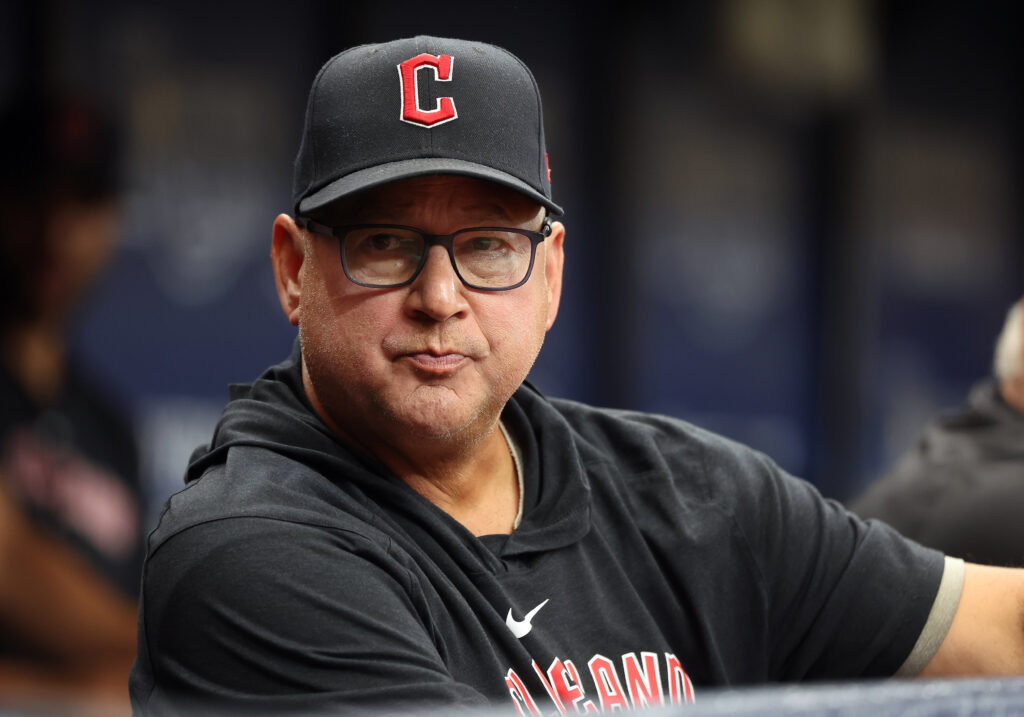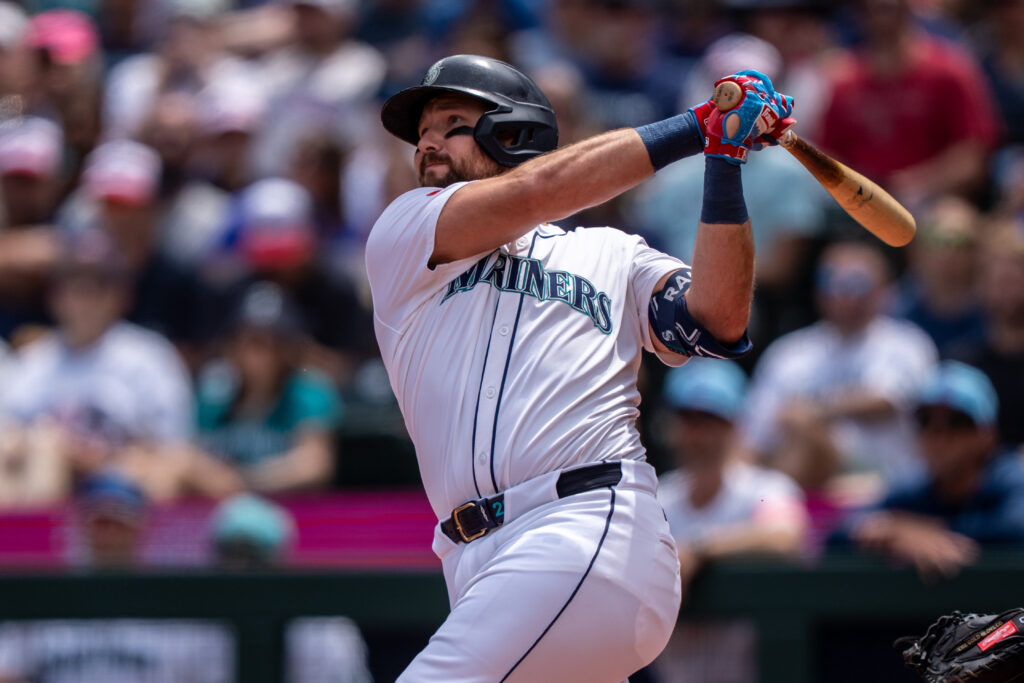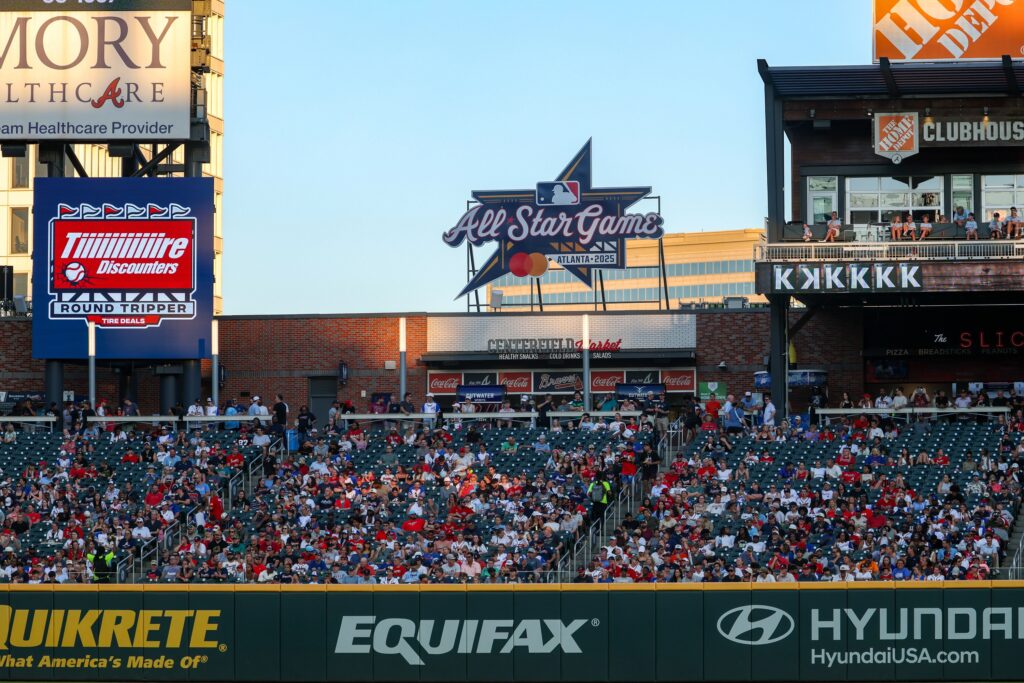This is the first article in a series that looks at the five best players at each position for the Cleveland Indians/Guardians franchise. In this installment are catchers and managers.
Baseball in Cleveland began 30 years before the franchise we know today started play in the first season of the American League in 1901. Prior to the National League, there was the National Association, a loose collection of professional teams that operated for five years. The Cleveland club, known as the Forest Citys, lasted just the first two seasons before folding in 1872.
There were two Cleveland franchises in the National League, with the Blues (led by manager and pitcher Jim McCormick) operating from 1879-84 and the Spiders playing in the league from 1897-99. In 1892, the Cleveland team, led by Cy Young and player-manager Patsy Tebeau, won 93 games, finishing second to Boston’s 102 and losing to the Beaneaters 5-0-1 in the World Series.
The modern franchise started play as the Bluebirds in 1901, but the players complained so much about the name, that it was shortened to Blues. Team coverage in the press was not like it is today, with dozens of websites reporting news and rumors. Newspapers were king in the early 1900s, and names had to both be popular and fit in a headline. During this era, newspapers, fans, and the players themselves gave teams several nicknames and sometimes they stuck. That was certainly the case with the Cleveland team, which was named the Bronchos (a less-common spelling of Broncos) in 1902, although it proved to be less popular.
In 1903, the Cleveland Press had a fan poll to give the team a new name, and the overwhelming choice was the Naps after new captain (and later manager) Napoleon Lajoie. However, fans had to know the name wouldn’t last, either because Lajoie would leave the team or eventually retire. The former happened when he went to Philadelphia after the 1914 season.
There were two stories as to where the Indians’ name came from. One was that it was in honor of Louis Sockalexis, a former Spiders player who was the first Native American in professional baseball history and had recently passed away. However, he had only played in Cleveland three seasons, when the team was on a decline. The other theory is that newspaper writers voted on a name and, seeing the success of the Boston Braves in winning the World Series that year, they decided to go in a similar direction with the moniker. Reports say the name was meant to be a stopgap, but it ended up lasting for 107 years.
As the 21st century moved along, the name Indians had many detractors due to its alleged derogatory nature toward Native Americans. The team was renamed the Guardians in November 2021 after the “Guardians of Traffic,” two 43-foot statues that watch over the city of Cleveland in front of the Hope Memorial Bridge.
In addition to the name change, the franchise has gone through 16 owners, which included several consortiums and investment groups, notably baseball executive Bill Veeck and Vern Stouffer, whose family ran restaurants and eventually led a frozen food empire.
Richard and David Jacobs, owners of shopping malls, hotels, and office buildings, bought the team in 1986 and built a new stadium (Jacobs Field) before selling it to attorney Larry Dolan and his sons in 2000. Private equity investor David Blitzer, who is the managing partner of the NBA’s 76ers and NHL’s Devils, and has stakes in more than a dozen other professional sports teams worldwide, purchased a 25-percent share of the Guardians in 2022.
On the field, Cleveland has performed well, finishing at .500 or better 69 times in 123 seasons. However, they have only been to the playoffs 16 times, mostly because they were stuck behind the Yankees or another top team in the American League before the playoffs were instituted in 1969. The Naps finished one-half game behind the Tigers in 1908 and the Indians won their first World Series in 1920. The team finished in second place twice over the next three decades before finally winning the title again in 1948. The Indians went to the World Series again in 1954 but were swept by the dominant Giants.
After a few solid seasons over the remainder of the 1950s, the Indians were not competitive again for nearly 40 years. They went to the playoffs six times in seven seasons from 1995-2001, including two World Series appearances, but lost to the Braves in 1995 and a heartbreaker in seven games to the upstart Marlins two years later.
The franchise has gone to the playoffs eight times in the 21st century, losing to the Red Sox in the 2007 American League Championship Series and to the Cubs in the 2016 World Series, with each going to seven games. The Guardians have not won a championship since 1948, and their 75-year title drought is currently the longest in Major League Baseball.
The Best Catchers and Managers in Cleveland Guardians History
Catchers
Honorable Mentions – Joe Azcue spent seven seasons with Cleveland (1963-69) winning two fielding titles. He was an All-Star in 1968 and hit .266 with 506 hits and 229 RBIs in 594 games with the franchise. Ray Fosse played eight seasons with the Indians in two stints (1967-72 and 76-77). He was named an All-Star and a Gold Glove recipient in back-to-back years (1970-71). In 1970, Fosse had 61 runs batted in to go along with a career-high .307 average and 18 home runs. However, the “Marion Mule” was never the same after Pete Rose ran him over to score the winning run in the All-Star Game that year.
John Romano spent five seasons with the Indians (1960-64) and went to four All-Star Games (although there were two games each year during the early 1960s). “Honey” hit .263 with 91 home runs and 294 RBIs in 580 games, and he reached double-digits in homers each year with the franchise. Yan Gomes was a 2018 All-Star who also was named a Wilson Defensive Player of the Year in 2013 and won a silver slugger the following season after hitting .278 and posting career highs with 21 home runs and 74 runs batted in. “Yanimal” played in 609 games with the Indians and had six hits, three runs, and an RBI in 11 playoff games. He went 0-for-4 in the loss to the Cubs in the 2016 World Series.
5. Luke Sewell – He was part of a group of three brothers who played in the Major Leagues. A solid fielder, Sewell spent 13 seasons with the Indians (1921-32 and 39), posting 829 hits and 388 RBIs in 979 games. He had his best season in 1927 when he drove in 53 runs and set career highs with a .294 average and 138 hits.
4. Victor Martinez – He was a three-time All-Star selection during his eight seasons in Cleveland (2002-09). His best year was 2007 when he won the Silver Slugger after hitting .301 with 25 home runs and a career-high 114 runs batted in. Martinez had 14 hits, six runs, two homers, and seven RBIs in 11 games as the Indians took the Red Sox to seven games in the ALCS. Overall, he hit .297 and had 900 hits, 413 runs, 103 home runs, and 518 RBIs in 821 games. During the 2017 season when he was with Detroit, it was discovered that Martinez had an abnormal heart rhythm that required cardiac fibrillation surgery. He played one more season before retiring in 2018.
3. Steve O’Neill – The Cleveland franchise is lucky in that it has had several long-tenured catchers to provide stability to their pitching staff through the years. O’Neill spent 13 seasons with the club (1911-23) winning the fielding title in 1918. He developed from the typical all-field and no-hit catcher to become solid with the bat. O’Neill’s best season was 1920 when he hit .321 with 55 runs batted in and set career highs with 63 runs, 157 hits, and 39 doubles. In the World Series that year, he had seven hits, three doubles, and two RBIs in the seven-game victory over Brooklyn. Overall, O’Neill hit .265 with 1,109 hits and 458 RBIs in 1,265 games.
2. Jim Hegan – Another long-time Cleveland backstop, he played 14 seasons with the Indians (1941-57 with three years missed due to service in World War II) and helped them reach the World Series twice during his tenure. Hegan was an excellent defender who earned five All-Star selections during the six years from 1947-52, and the only year he was not chosen was his best offensively. In 1948, he set or tied career highs with 60 runs, 117 hits, 21 doubles, 14 home runs and 61 runs batted in. Overall, Hegan played in 1,526 games, which is the fourth-most in franchise history. He totaled 526 runs, 1,026 hits, 171 doubles 90 homers, and 499 RBIs. In two World Series appearances, Hegan had six hits, three runs, one home run, and five RBIs in 10 games.
1. Sandy Alomar Jr. – He played 11 seasons with the Indians (1990-2000), earning six All-Star selections and one gold glove. Alomar Jr., the son of Major League player and coach Sandy Alomar Sr. and brother of Hall of Famer Roberto Alomar, won the Rookie of the Year Award in 1990 after hitting .290 with nine home runs and 66 RBIs. In 1997, he had his best offensive year, setting career highs with a .324 average, 63 runs, 146 hits, 37 doubles, 21 homers and 83 runs batted in.
He earned MVP honors at the All-Star Game at his home stadium of Jacobs Field after hitting a tiebreaking two-run homer in the seventh inning of the 3-1 American League victory. Overall, Alomar Jr. hit .277 with 416 runs, 944 hits, 194 doubles, 92 home runs, and 453 RBIs in 985 games with the Indians. He also appeared in 49 playoff contests, totaling 17 runs, 37 hits, five homers, and 28 runs batted in.
Managers
Honorable Mentions – Roger Peckinpaugh went 490-481 in seven seasons leading the Indians (1928-33 and 41). The team’s best performance under his watch was third in 1929 when they went 81-71 and finished in third place, 24 games behind the dominant Philadelphia Athletics. Napoleon Lajoie was a Hall of Fame second baseman who led the team that took his name to a 377-309 record in five seasons (1905-09). The Naps finished in third place in 1906 and ended up second in 1908 by the slimmest of margins, one-half game behind the Tigers for the pennant, with the White Sox just 1 1/2 games back.
Charlie Manuel brought the team into the 21st century, leading the Indians to a 220-190 record in three seasons (2000-02). Cleveland missed the playoffs by five games in Manuel’s first year and fell in the Division Series in 2001 before he was fired midway through the following season. Eric Wedge took over the year after Manuel left and led the team to a 561-573 record in seven years (2003-09), a run that included five straight winning seasons. However, the only time the Indians made the playoffs during his tenure was in 2007, when they took the eventual champion Red Sox to seven games in the ALCS.
5. Al Lopez – His time in Cleveland lasted for six seasons (1951-56), and his club had a winning record in each of them. Overall, Lopez led the Indians to a 570-354 record, and his .617 winning percentage is the highest in the history of the franchise. His best season by far was 1954 when he led the team to a 111-43 mark that set records for most wins and highest winning percentage (.721) in franchise history. However, the Indians got swept by the Giants for the title and didn’t return to the World Series for more than 30 years.
4. Tris Speaker – The Hall of Fame center fielder put together a solid managerial stint with the Indians, going 617 and 520 over eight seasons (1919-26). After taking over as a player manager midway through the 1919 season, Speaker led his team to a second-place finish behind the “Black Sox.” The following year, Cleveland won 98 games and beat Brooklyn for its first championship. The Indians finished in second in 1921 and again in 1926 before Speaker left at the end of the season.
3. Mike Hargrove – He took over a floundering franchise that hadn’t been successful in three decades and, thanks to his leadership and attention to detail, led the club back to respectability. After finishing one game out of a playoff spot the year before, Hargrove led the Indians to 100 wins and the World Series in 1995, losing to the Braves in six games. After 99 wins the following year, Cleveland was back in the Fall Classic in 1997, this time falling to a young Florida team. Overall, Hargrove went 721-591 in nine seasons (1991-99) and led the Indians to playoff appearances his final five seasons (after having only three in their first 93 years).
2. Lou Boudreau – A Hall of Fame shortstop that we will see in a future article, Boudreau had a 728-649 record, and he led the team to a winning record six times in his nine seasons as a player-manager (1942-50). The greatest of these seasons was 1948 when the Indians had 97 wins and finally broke through, beating the Boston Braves in six games to win their first championship since 1920. Despite four straight winning seasons, Boudreau was released from both his roles after the 1950 season and signed with the Red Sox.
1. Terry Francona – The team’s current manager is also the best, at least in terms of victories. Francona has the most wins in franchise history, and his 904-734 mark and includes a winning record in nine of 11 seasons so far (2013-present). His only non-winning seasons are 2021, went the Indians went 80-82 in their finals season, and this year, with the Guardians currently at 62-70. “Tito” has taken Cleveland to the playoffs six times in his tenure, losing to the Cubs in seven games in the 2016 World Series and winning 102 games the following year before falling in the Division Series.
Upcoming Stories
Cleveland Guardians First and Third Basemen and Designated Hitters – coming soon
Cleveland Guardians Second Basemen and Shortstops – coming soon
Cleveland Guardians Outfielders – coming soon
Cleveland Guardians Pitchers – coming soon
Previous Series
A look back at the Cincinnati Reds
Cincinnati Reds Catchers and Managers
Cincinnati Reds First and Third Basemen
Cincinnati Reds Second Basemen and Shortstops
Cincinnati Reds Outfielders
Cincinnati Reds Pitchers
A look back at the Chicago White Sox
Chicago White Sox Catchers and Managers
Chicago White Sox First and Third Basemen and Designated Hitters
Chicago White Sox Second Basemen and Shortstops
Chicago White Sox Outfielders
Chicago White Sox Pitchers
A look back at the Chicago Cubs
Chicago Cubs Catchers and Managers
Chicago Cubs First and Third Basemen
Chicago Cubs Second Basemen and Shortstops
Chicago Cubs Outfielders
Chicago Cubs Pitchers
A look back at the Boston Red Sox
Boston Red Sox Catchers and Managers
Boston Red Sox First and Third Basemen
Boston Red Sox Second Basemen and Shortstops
Boston Red Sox Outfielders and Designated Hitters
Boston Red Sox Pitchers
A look back at the Baltimore Orioles
Baltimore Orioles Catchers and Managers
Baltimore Orioles First and Third Basemen
Baltimore Orioles Second Basemen and Shortstops
Baltimore Orioles Outfielders and Designated Hitters
Baltimore Orioles Pitchers
A look back at the Atlanta Braves
Catchers and Managers
First and Third Basemen
Second Basemen and Shortstops
Outfielders
Pitchers
A look back at the Arizona Diamondbacks
Catchers and Managers
First and Third Basemen
Second Basemen and Shortstops
Outfielders
Pitchers



